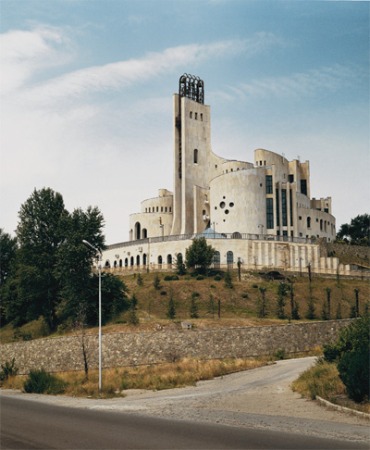When pontificating on the finer points of Soviet architecture, one cannot help but draw a comparison to the sci-fi literature and artwork of the old-school Communist era. The future was clearly on the minds of everyone, including designers who apparently believed that everything should look like it was inspired by a Leon Trotsky novel.
In his classic work of literary criticism from the Marxist standpoint, Literature & Revolution (1924), Trotsky wrote, “The new architecture will be made up of two halves; of new problems and of a new technical means of mastering both new and old material. The new problem will not be the building of a temple, or a castle or a private mansion, but rather a people’s home, a hotel for the masses, a commons, a community house, or a school of gigantic dimensions. The materials and the method of using them will be determined by the economic condition of the country at the moment when architecture will have become ready to solve its problems.” Perhaps Trotsky’s words were never fully heeded, as many buildings in the Eastern Bloc did more to resemble the erotic dreams of a sci-fi geek than to “solve its problems.” One only needs to look at the flying saucer-like roof of the Institute Of Scientific Research in Kiev, or the utopian Palace of Ceremonies in Georgia to get an idea of the stranglehold unrestrained futurism had on Communism. As Trotsky so succinctly put into words the unadulterated meaning of the term, “Futurism is against mysticism, against the passive deification of nature, against the aristocratic and every other kind of laziness, against dreaminess, and against lachrymosity – and stands for technique, for scientific organization, for the machine, for planfulness, for will power, for courage, for speed, for precision, and for the new man, who is armed with all these things.” We couldn’t have said it better ourselves.
To further explore the architectural imagination that permeated the latter years of the Soviet era, check out the book Cosmic Communist Constructions (2011), photographed by Frédéric Chaubin.



